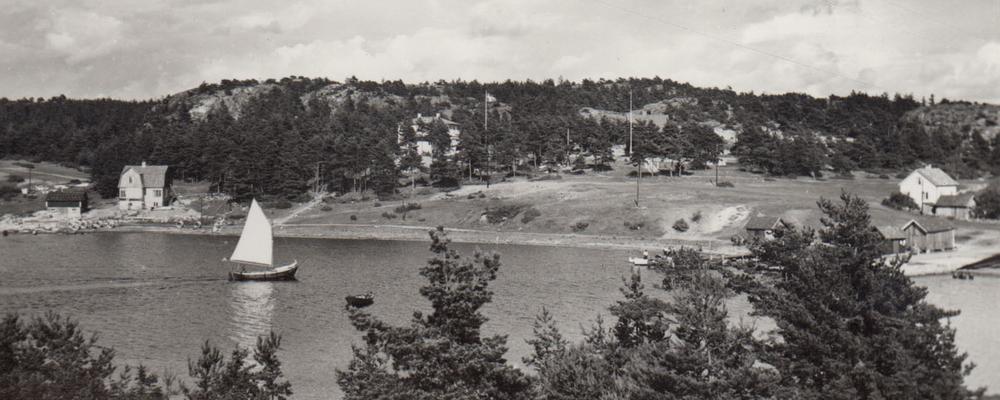
History
In 1963, the first course in marine biology was held on Tjärnö in the Furuhöjd guesthouse - also known as 'Panget'. Today, Tjärnö Marine Laboratory is a workplace for nearly 70 people, with world-class research and teaching, and thousands of visitors from the public and schools every year.
In the early 1960s, the University of Gothenburg held its marine field courses on board an old schooner that trundled along the Bohus coast. But before the summer of 1963 the boat had burned down, and instead the course was held at the closed guesthouse "Pensionat Furuhöjd" on Tjärnö. The area was considered perfect for marine biological studies, with the deep Kosterfjord just outside, and the local fishermen had a good knowledge of where corals, sponges, and other for Sweden exotic marine animals could be found.
Tjärnö Marine Zoological Station is established
After a couple of years, the University of Gothenburg wanted to make the activities more permanent, and the state bought Pensionat Furuhöjd. Since Stockholm University also was looking for a place for its field courses, Tjärnö Marine Zoological Station was established as a joint field station for the two universities. The young course assistant Lars Afzelius became the first director, and a shrimp trawler was hired as a station boat with a crew of three fishermen from the island.
In an interview in GU Journalen in 1999, Lars Afzelius tells about the first years at Pensionat Furuhöjd: “Everything took place in one and the same room. When it was time to eat, we carried the microscopes out and brought them back in afterwards. Animals and seaweed that we fetched from the sea were placed in tubs in the garden. And at night, the fox came and ate all the animals ...”

From guesthouse to research station
During Lars Afzelius' leadership, the station grew. Studying marine biology was popular and the number of students increased. The primitive conditions in the guesthouse became unsustainable, and in 1969 the 'Red Barn' was opened with a lecture hall and a course laboratory. It would be another thirteen years before the 'Red Residence' was completed; until then the students lived in the old boarding house, or in one of the simple barracks erected on the adjacent slope.
Lars Afzelius was good at finding funding, and slowly but surely the station expanded with a restaurant and canteen, ships, workshop buildings, boathouses, an aquarium hall, and an auditorium.
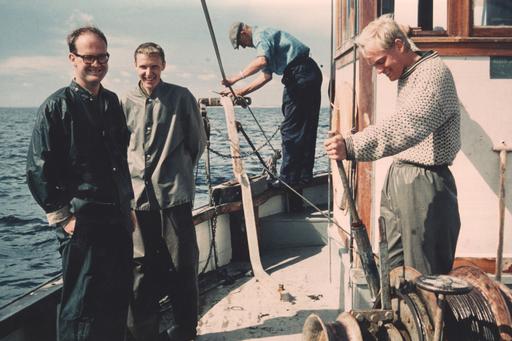
Until 1975, research had been more or less 'forbidden' at the station, as the Tjärnö Laboratory was intended solely for teaching. But a group of young PhD students who wanted to work at Tjärnö all year round managed to change this. One of them was Kerstin Johannesson, who eventually succeeded Lars Afzelius as station manager.
Researchers and students from all over the world
Allowing research at Tjärnö proved to be very successful. Today, Tjärnö Marine Laboratory is a successful year-round workplace for marine research and learning for nearly 70 people. The station conducts pure basic research in areas such as evolution and chemical ecology, but also more applied projects such as aquaculture, and restoration of eelgrass and coral reefs. The Tjärnö Laboratory is well known throughout the world and can compete with prestigious research stations such as Woods Hole in the USA.
Many of the researchers at Tjärnö have an international background, and some visit Tjärnö for shorter or longer periods during their career. In addition to the University of Gothenburg, other universities from Sweden and the rest of Europe regularly book courses at Tjärnö.
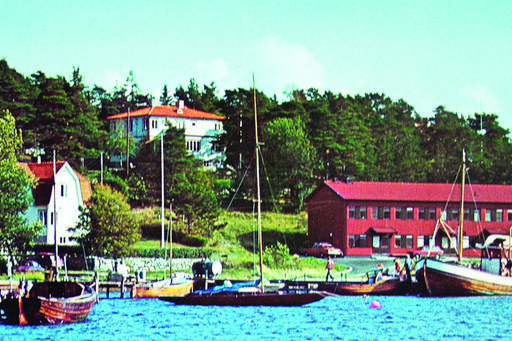
Important for the area
The knowledge of the staff and researchers at Tjärnö Laboratory has also been of great importance for the care and management of the sea in the local area, for example in the establishment of the Kosterhavet National Park in 2009, where the station contributed both knowledge of the local area and mapping of habitats and species.
Another example concerns the development of a more sustainable shrimp fishery in the Kosterfjord. Staff at the Tjärnö Laboratory and the local fishermen started working together to improve dialogue and understanding of each other. This included organising courses where the fishermen came to Tjärnö to study marine biology, and the Tjärnö staff in turn went out on the boats to learn more about fishing.
Eventually, this collaboration led to the rules that protect particularly valuable ocean floor areas in the Kosterfjord.

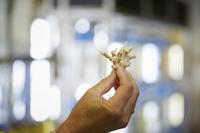
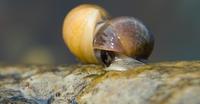
The public and schools
Part of activities at the Tjärnö Laboratory have always been aimed at the public and schools. Already in the 1970s, Lars Afzelius realised how important it was for the University to open up to society and he laid the foundation for the Tjärnö Laboratory's outreach activities with aquariums, school visits and popular science lectures. He also invited politicians and authorities to various collaborations.
The legacy of Lars Afzelius still lives on in Tjärnö today. Cooperation with local businesses and schools is well developed, and every year thousands of visitors are guided by the station's public outreach officers and researchers on sea expeditions and beach excursions in the local area.
School classes and teachers come from all over Sweden to familiarise themselves with the ocean and marine biology.
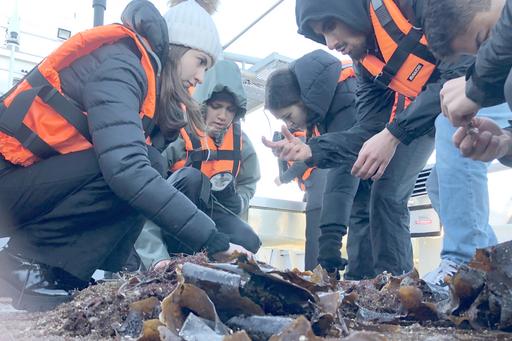

- 1963 The first course in marine biology is held in Furuhöjd's guest house, also called "Panget".
- 1965 The "Tjärnö Marine Zoological Station" was established, to be run jointly by the Universities of Gothenburg and Stockholm.
- 1969 A first course building with a lecture hall and course laboratories was built. Teaching moves from "Panget", but the students still live there.
- 1974 The station changed its name to "Tjärnö Marine Biological Laboratory".
- 1982 A large extension was made with a barracks, dining hall, boathouses and staff quarters. The Swedish king inaugurates.
- 1983 The old shrimp trawler Virgo was replaced by today's research vessel Nereus.
- 1985 The first version of Tjärnö Aquarium is built and the outreach activities develops.
- 1995 Pensionat Furuhöjd was demolished and the White House with room for 48 guests was built in its place.
- 1996 The Tjärnö Laboratory was designated a regional knowledge centre, a so-called Centre of Excellence with support from the EU.
- 1999 Lars Afzelius leaves the position as director. He was succeeded the following year by Kerstin Johannesson.
- 2004 Tjärnö Laboratory becomes one of the first units at the University of Gothenburg to be environmentally certified according to ISO 14001 and EMAS.
- 2008 Tjärnö Laboratory becomes a unit at the Sven Lovén Centre for Marine Sciences. Stockholm University leaves the joint partnership.
- 2018 The Department of Marine Sciences takes over the operation of the station, and the following year the name is changed to the "Tjärnö Marine Laboratory".
- 2024 Marina Panova becomes new station director of Tjärnö Marine Laboratory, taking over from Kerstin Johannesson.
